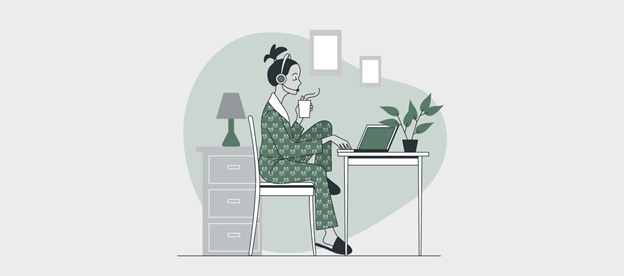For many of us, over the last six months, video calls and Zoom meetings have become the new normal. Though initially the idea of conferencing from the comfort of our own homes sounded like a welcome change of pace, the effects of this new virtual collaborative environment have resulted in “zoom fatigue”.
There are many factors of zoom meetings that contribute to overstimulation and zoom fatigue:
When on video calls, we are hyper-focused on the few available visual cues that we normally gather from a full range of available body language and shared surroundings. This concentrated focus is extremely draining. When conferencing with several people online at the same time, we are simultaneously processing visual cues from all of those people (in addition to environmental distractions, buffering, and the inherent lag) in a way we never have to do around a conference table. This stimulus-rich environment can easily become overwhelming and exhausting.
Additionally, with the ability to check emails and look into additional work, we all face the temptation to multi-tasks when on Zoom Calls. Multitasking not only leads to reduced focus and understanding of the meeting content, but also contributes to over-stimulation while our brain tries to focus on and process multiple tasks and data.
As we continue to be over-stimulated by this extraneous data unique to the virtual environment, we get further away from the human-to-human connection that we all crave and appreciate. Here are a few suggestions on how to approach zoom calls to enhance productivity and reduce zoom fatigue:
- Take time to individually greet each meeting participant as you would in a physical environment. Offer your attention to each face that appears and give a moment to acknowledge the presence of another. Applying this in-person professionalism in the zoom environment will help you feel connected and more engaged.
- If you are able to, set your zoom configuration to Speaker View so that the one person who is speaking has more of my attention and the others are more peripheral. This gives off the effect of sitting around a conference table where we are aware of everyone there but we direct our attention primarily to whoever is speaking. Tracking an array of 24 (or more) faces on Grid View can be a challenge!
- Try to take breaks between sessions. During these times, it is easy to feel overwhelmed, unsettled or preoccupied. Make sure to take screen breaks and time to reset between hyper-focused zoom meetings.
- Resist the urge to multitask. Though it is awfully tempting to crank out some additional work during particularly unengaging meetings, try your best to avoid opening other tabs and engaging in additional tasks during Zoom meetings. This will help your brain focus and not feel overwhelmed and exhausted.
- Break away from the screen when you can. During quarantine, Zoom happy hours have become a popular way to socialize with friends while also practicing social distancing. But oftentimes, this added screen time can be more draining than fun. If you are comfortable doing so, opt for outside social-distancing activities, like a hike, beach walk, or small outdoor gathering.
Though some of these tips might be hard to follow at first, taking these steps can help you prevent feeling so exhausted at the thought of another video chat. It’s tiring enough trying to adapt to this new normal, but it doesn’t have to be Zoom and Gloom.

